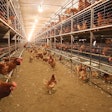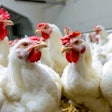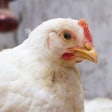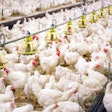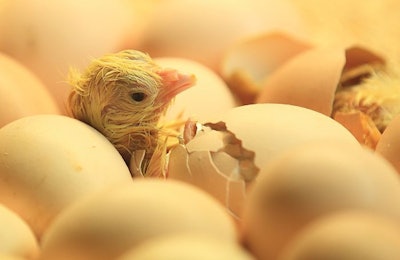
Genetic engineering technology could generate a layer breed that produces only non-GMO layer hens, which could help reduce or even eliminate male chick culling at layer farms.
“We have developed a system which allows us to modify the chicken genome in a very accurate and desired way,” said Yuval Cinnamon, a principal investigator at the Agricultural Research Organization, The Volcani Center, NRS Poultry Sustainability and Transformation.
“We can introduce a trait which stops embryogenesis at a very early stage, all male embryos will cease to develop and will no longer hatch. Excluding male eggs from the incubators will save 50% of the space and energy, thus benefiting sustainability."
Approximately 6-7 billion male layer chicks are culled each year, a major animal welfare and economic concern for the layer industry. Animal welfare organizations have pressured the egg industry to find an alternative approach.
Cinnamon is one of the many experts scheduled to speak during the Poultry Tech Webinar Series, scheduled for November 2, 4, 10, 11, 17, 30 and December 2. This one-of-a-kind series explores innovation technologies from researchers and entrepreneurs that could transform the poultry industry.
This webinar series is proudly sponsored by: Arm & Hammer, Aviagen, Baader, Boehringer Ingelheim, Cargill, Ceva, Chore-Time, Cobb, Evonik, Marel, Phibro Animal Health, Staubli, and Zoetis.
Register for free today and join us for a glimpse at the future of the poultry industry.
How it works
In chickens and other birds, sex is determined by a ZZ:ZW sex chromosome system. Unlike the XY sex chromosome system in humans, females have a pair of dissimilar chromosomes (ZW), while the males have two similar chromosomes (ZZ).
Using genetic engineering, the research team created a breeding flock with hens harboring a lethality embryonically inducible gene located on the maternal Z chromosome. Upon activation of the gene by blue light illumination, male embryonic development is stopped very early in development.
The females receive a wildtype W sex chromosome for the mother hen and wildtype Z chromosome from a normal male, which means the female chicks contain no modified genetic material and are genetically identical to the hens currently used by the egg industry.
“The challenge of generating genetically transformed chickens is very difficult. It’s not like generating other genetically modified organisms like mammals,” Cinnamon explained. “It begins with in-silico research, which is bioinformatics, through tissue culture, molecular biology, genetic engineering and gene editing using CRISPR technology, all the way to chicken production.”
What’s coming next
For more on the technologies set to advance the poultry industry, join industry-changing innovators, researchers, entrepreneurs, technology experts, investors and leading poultry producers at the Poultry Tech Webinar Series, scheduled for November 2, 4, 10, 11, 17, 30 and December 2.
During the webinar series, industry experts will preview what’s coming next – from prospective solutions to developing technology – for the poultry industry.
This webinar series is proudly sponsored by: Arm & Hammer, Aviagen, Baader, Boehringer Ingelheim, Cargill, Ceva, Chore-Time, Cobb, Evonik, Marel, Phibro Animal Health, Staubli, and Zoetis.
Visit our website for more details on the webinar series, topics and speakers.
Register for free today and join us for a glimpse at the future of the poultry industry.
Like what you just read? Sign up now for free to receive the Poultry Future Newsletter







